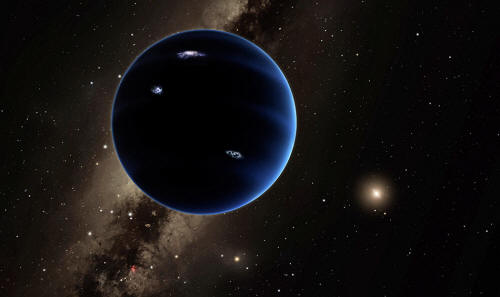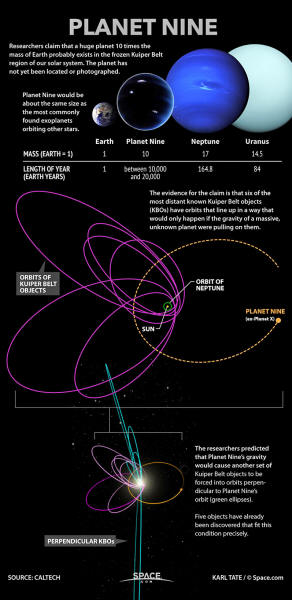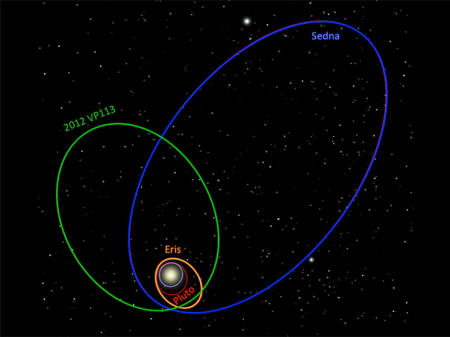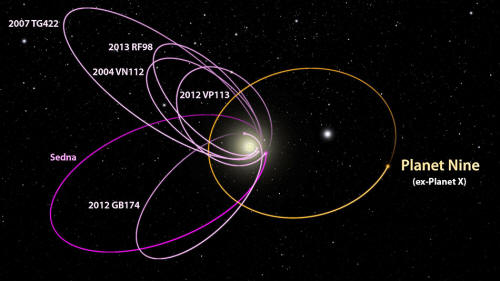|
a hypothesized world about 10 times more massive than Earth
that may orbit far from the sun.
If Planet Nine really exists, astronomers have a pretty decent chance of spotting it.
On Wednesday (Jan. 20), scientists announced that a planet about 10 times more massive than Earth likely lurks in the distant outer solar system, orbiting perhaps 600 times farther from the sun than Earth does on average.
The evidence for the existence of this "Planet Nine" (ex-Planet X) is indirect at the moment; computer models suggest a big, undiscovered world has shaped the strange orbits of multiple objects in the Kuiper Belt, the ring of icy bodies beyond Neptune.
But direct evidence could come relatively soon, in the form of a telescope observation, Planet Nine's proposers say.
Indeed, at closest approach,
(Planet Nine's orbit likely brings it as close as 200 to 300 astronomical units, or AU, to the sun, and takes it as far away as 600 to 1,200 AU, Brown said. One AU is the average distance from Earth to the sun - about 93 million miles, or 150 million kilometers.)
Finding Planet Nine
points to the existence of an unknown planet orbiting the sun. Here's what we know of this potential "Planet Nine."
Credit: by Karl Tate,
Infographics artist
Planet Nine is therefore probably not too close to the sun at the moment, said Brown, who has discovered or co-discovered a number of distant solar system objects, including the dwarf planets Eris and Sedna.
But powerful ground-based telescopes can probably still detect the object, wherever it may be, he added.
Just how big a swathe?
Astronomer Scott Sheppard, of the Carnegie Institution for Science in Washington, D.C., has come up with a rough estimate:
That corresponds to about 50 nights of observations using a powerful instrument such as the Subaru Telescope in Hawaii, said Sheppard, who has a lot of experience finding far-flung objects in the solar system.
For example, in 2014, he and Chadwick Trujillo of the Gemini Observatory in Hawaii discovered an object called 2012 VP113, whose orbital characteristics hint at the presence of a Planet Nine.
The 27-foot-wide (8.2 meters) Subaru Telescope is the go-to observatory for the search, because Planet Nine is predicted to be visible in the Northern Hemisphere sky, both Brown and Sheppard said. (Many other big, powerful scopes are in Chile, south of the equator.)
Sheppard stressed that it's tough to know just how detectable Planet Nine would be, considering the uncertainties surrounding the putative world's size, orbit and composition - all characteristics that affect brightness.
But, Sheppard told Space.com,
(The broader survey also employs a
telescope in Chile, which spotted 2012 VP113.)
But the hunt for smaller bodies such as 2012 VP113 will continue as well.
A planet with 10 times the mass of Earth may be orbiting the sun beyond Neptune. This image shows the theorized orbit of the giant planet
and six other solar
system objects beyond Neptune.
(Confirming the planet's existence will
require more than one image, because astronomers will need to see
the object move to know it's not a background star or other
extremely distant object.)
|





